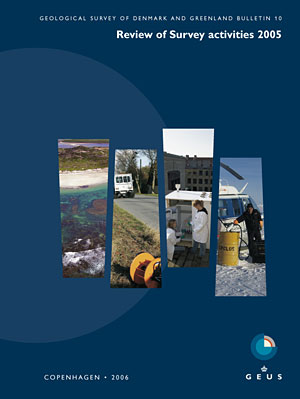
How to Cite
Share
Abstract
The Arctic Ocean is a landlocked basin, at present covered by perennial sea ice. During the past few decades a significant thinning and shrinking of the sea ice has been observed, and modelling studies indicate that the Arctic Ocean ice cover could, by the end of this century, almost disappear from most parts of the Arctic Ocean during peak summer seasons. It remains uncertain, however, whether the environmental changes are an enhanced greenhouse-warming signal or a result of natural (long-term) variability, but palaeoceanographic studies can contribute to our understanding of the natural variability of environmental parameters, e.g. sea-ice cover and oceanographic changes on time-scales of centuries to millennia. As part of the multidisciplinary EU project Greenland Arctic Shelf Ice and Climate Experiment (GreenICE), sediment coring and seismic reflection measurements have been undertaken in a hitherto unexplored part of the Arctic Ocean, the margin of the Lomonosov Ridge in the Lincoln Sea (Fig. 1). The aim of the project was to study the structure and dynamics of the sea-ice cover and attempt to relate these to longer-term records of climate variability retrieved from sediment cores. The main field work was carried out in May 2004 from an ice camp established by a Twin Otter aircraft on drifting sea ice at 85°N, 65°W, c. 170 km north of Alert, Arctic Canada. The camp was deployed over the shallowest part of the Lomonosov Ridge off the northern Greenland/Canada continental margin (Fig. 1). The sea-ice drift would normally be between east and south, but persistent easterly winds resulted in a fast drift trajectory towards the WSW, such that the camp drifted a distance of approximately 62 km during the two weeks camp period. At present the study area is heavily ice covered, and forecast models of future shrinking Arctic sea-ice cover suggest that this area is one of the least sensitive to warming in the Arctic. The results obtained from the GreenICE project challenge this view.
How to Cite
Share
Downloads
Editors: Martin Sønderholm & A.K. Higgins
The Review of Survey activities presents a selection of 15 papers reflecting the wide spectrum of activities of the Geological Survey of Denmark and Greenland, from the microscopic to the plate tectonic level.
Activities in Denmark: The Survey's field of activities in Denmark is illustrated by four papers on [...]










